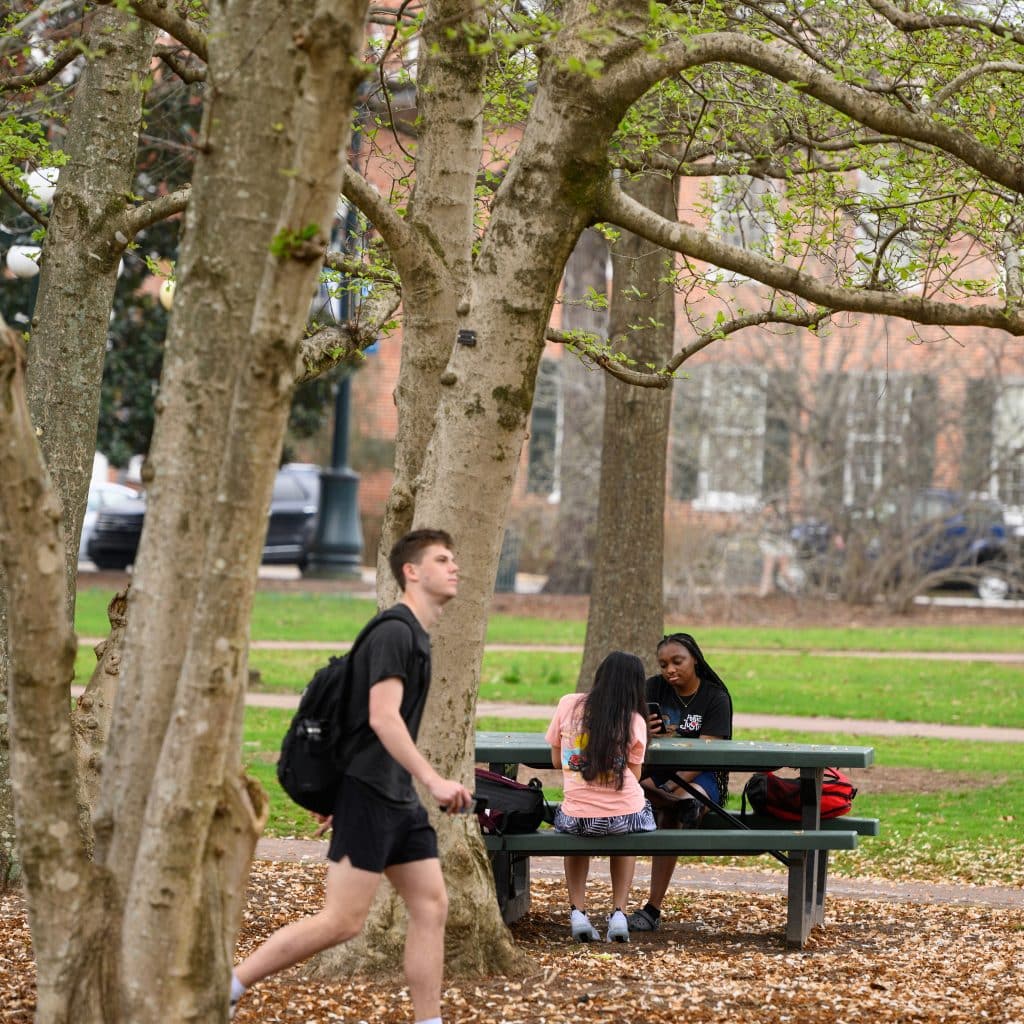OXFORD, Miss. – When walking in the Grove or the Circle, one of the first things most people notice is the trees. Grand oaks line sidewalks, shade picnic tables and contribute to the University of Mississippi’s reputation as one of the most beautiful campuses in the country.
Supported by an Urban & Community Forestry Grant from the Mississippi Forestry Commission, the university is collecting new information about the benefits of its trees by partnering with Oxford consulting arborist firm Green Groves.
“Trees provide such value to our campus,” said Jeff McManus, director of landscape services. “They provide shade, atmosphere, erosion control and also help reduce carbon.
“We like to be as protective as we can with our campus trees, and this project will help us continue to provide the best care for them.”
The project, which began last fall, involved taking inventory of all the trees in the Grove and Circle. Matt Nielson, owner of Green Groves, conducted the inventory of more than 250 trees.
“I help my clients understand what kinds of trees they have, their condition, associated risk and ways to mitigate that risk and improve tree health,” said Nielson, who is a certified arborist and tree risk assessment expert. “My role in this project was to inventory the trees, provide a health assessment and make recommendations for landscape services to consider.”
The study found that the Ole Miss trees remove 305 pounds of air pollutants annually. They also store a “massive” amount of carbon – 962,073 pounds to be exact.
“This is important, because one of the best ways to reduce carbon is to plant trees,” said McManus, who is also a certified arborist. “It’s a very underutilized strategy. If you’re worried about climate change, planting trees can be a great solution.”
The predominant genus on campus is oak, which tends to contain many long-living and resilient species, Nielson said.
“Oaks are often our longest-lived trees in the Southeast,” Nielson said. “Many of our oak species have a high tolerance for changing conditions, such as what happens in the Grove during tailgating and varying amounts of rain.
“Compaction of soil is one of the most significant factors that trees on campus have to overcome. Soil compaction results from foot and vehicular traffic which happens anywhere people frequently interact with trees. This results in less air reaching the trees’ roots. Some species are better than others at adapting to these conditions.”
Nielson emphasized the importance of caring for trees because of their many social and environmental benefits.

“The bottom line is that, in general, people benefit from trees, and they benefit the most from properly managed, healthy trees,” he said. “To properly manage them, you have to start by having an accurate inventory of the trees you have.”
The last time an inventory of this nature was conducted on campus was in 2004. Since, many areas on campus have changed and a fresh inventory was recommended.
One new feature is the addition of a tree management software called TreePlotter. The user-friendly platform allows landscape services staff to document care-related tasks online such as planting, pruning or fertilizing. This will enable an active record and inventory of the trees that can be continuously managed from year to year.
The department hopes to have future inventory work expand to include all campus trees, McManus said.
“We would like to do this on a grander scale,” he said. “We started off relatively small and prioritized the Grove and Circle trees because they are the focal point of the campus.
“However, the goal is to ultimately take inventory of all the trees on campus if funding is available. We are thankful for the Mississippi Forestry Commission’s and the university’s support to get the project started.”
By Erin Garrett